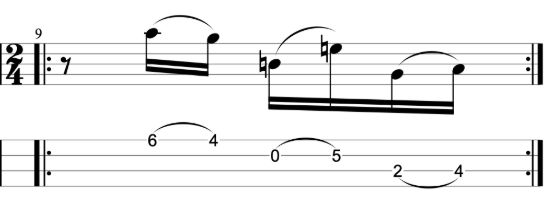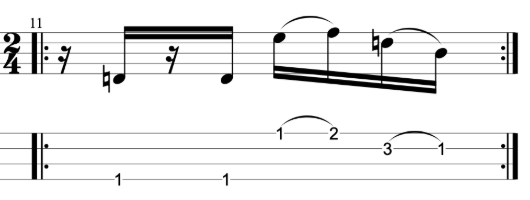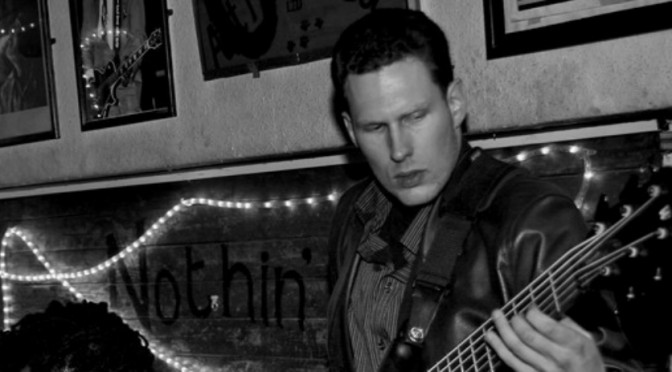Slap Bass 10 Minute Workout – Bass Practice Diary – 4th August 2020
This is the third 10 minute bass practice workout that I’ve released, but the first to feature slap bass techniques. There are a lot of videos on YouTube of bass players teaching and demonstrating slap techniques. They’re often fast and flashy and they almost always involve using lots of open strings. There’s nothing wrong with that, because those things are fun to play. But, in this video I’ve tried to zero in on what I think are the fundamental techniques that bass players should practice, so that they can use slap bass techniques in “real world” music situations.
What are the fundamentals of slap bass?
If you follow my Bass Practice Diary videos, then you probably know that slap bass is not my “main thing” on bass. The vast majority of what I do is played finger style, but I like to keep my slap bass chops ready for when they’re needed. This line, that I’ve written is typical of the kind of exercise that I’ll set for myself when I’m practicing slap bass.
I’ll start by asking myself the question, what do I need to be able to do in order to execute slap bass lines quickly and accurately when they’re put in front of me on a gig? Then I’ll come up with a line, like this one, that I feel tests me on the fundamental techniques that I need. So, I haven’t included any advanced techniques like double thumbing or machine gun triplets. Those are great techniques for playing slap bass solos, but I’m more interested in the fundamentals that I need to make my slap bass lines sound good.
For me, the fundamental techniques of slap bass are the thump with your thumb, the pull with your index finger, the hammer ons and pull offs with your left hand for playing legato lines and dead notes. When I’m practicing these fundamentals, I’m concentrating on trying to get my timing as well as my tone and dynamics even. So all the notes can be heard and nothing is coming out too loud.
Bass players often use compression on their slap bass lines to even out the dynamics. It’s ok to do that, but I would strongly recommend that you don’t use compression when you practice. You need to learn to control the dynamics with your hands. Using compression will subconsciously teach you that you don’t need to control the dynamics because the compression does it for you.
The 10 Minute Slap Bass Workout
If you’ve done one of my workouts before, you’ll know the format by now. I divide the 10 minutes up into four exercises, each practiced for 2 minutes (roughly). And then the last 2 minutes is for putting all four exercises together into one line. Each exercise is practiced at four different tempos, roughly 30 seconds at each tempo. The first tempo should be very slow to help get used to the notes in each new exercise. And the last tempo for each exercise should be pushing you to the edge of your comfort zone.
The last tempo should be challenging but not impossible. It’s a mistake to try and go too fast. You need to push yourself in the last 30 seconds but I think it’s a much bigger mistake to go too fast than too slow. I’ve set the tempos in this video at tempos that work for me, 40bpm, 55bpm, 70bpm and 85bpm. If those tempos don’t work for you, then do the workout in your own time at your own tempos. You only need a metronome or a drum beat, which you can find for free online.
The line is based around a jazz III-VI-II-V in the key of E major. The line itself uses hardly any open strings. I’ve done this deliberately, because it’s harder to play slap bass without using open strings. Typically, when I’ve been asked to play slap bass on gigs, I’m very rarely required to play in keys like E and A where I can use lots of open strings. It’s more often in keys like F and Bb because those are popular keys for keyboard players and horn players.
My line is in the key of E. However, I’ve chosen the chords G#m7 – G7 – F#m7 – F7. Therefore, there isn’t much opportunity to use the open strings on the root notes. However, once you’ve learned the line, you can resolve it onto an E chord, which is fun because you can then bring in the open E string. Here’s the line.

The Exercises
The first exercise goes like this.

I’m practicing it as a 3-beat repeating cycle. The chords at this point go from G#m7 to G7. I’ve included one dead note, which I’m playing by striking the string with my right-hand thumb while muting with my left hand. I haven’t included many dead notes, because I feel like I probably over use them when I improvise a slap bass part. I also put dead notes in instinctively on rest strokes. You can hear me doing it in the video. So feel free to improvise dead notes on any of the rests. You can play dead notes with your right hand and left hand, I usually use a combination of both.
After the dead note, there’s a hammer on from the 2nd to 4th fret on the A-string. In this exercise, I’m working on getting an even sound between the notes that I’m thumping, which are the notes on the A and E-strings. And the notes that I’m plucking on the G and D-strings.
The second exercise is this.

This is a bass fill played using a combination of hammer ons and pull offs with the left hand. While the right hand is using both index finger and thumb. It starts by plucking the 6th fret on the first string and pulling off to the 4th fret. Then the right-hand thumb plays the open string second string and the left hand hammers on the 5th fret. Then I use my thumb again to play the 2nd fret on the A-string and I hammer on to the 4th fret. Watch out for the rest on beat 1, and the goal is to make it sound like one smooth line.
Exercise 3 goes like this.

Each note in this exercise is articulated using either the thumb or index finger on the right hand, with no written dead notes or legato phrasing. You can improvise dead notes on the rests. It’s a 3-beat cycle, like exercise 1. I could play exercise 3 as a 2-beat cycle, but it flows better with the quarter note rest on the end.
This is the fourth and final exercise.

Another rest on beat 1. More combinations of thumping and plucking, hammer ons and pull offs. Good Luck!

